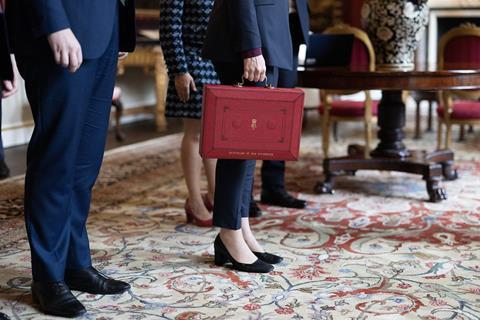Schools, housing and hospitals all set to benefit as Labour goes for growth
The chancellor has announced more than ┬Ż100bn in capital spending over the next five years after confirming changes in the definition of debt to allow greater government investment.
Delivering her first budget this morning, Rachel Reeves said the only way to drive economic growth was to ŌĆ£invest, invest, investŌĆØ, describing Wednesday as an opportunity to ŌĆ£turn the page on the last 14 yearsŌĆØ.
ŌĆ£TodayŌĆÖs budget marks an end to short-termism,ŌĆØ she added.
The Office for Budget Responsibility (OBR) has forecast that her plans will boost growth for the UK, but only in the short term.

Departmental capital spending limits are set to incease by an average of 3% each year to 2030, including a 9.9% real terms increase of ┬Ż13bn next year.
Reeves noted that the governmentŌĆÖs efforts to restore economic stability had ŌĆ£begun to create the conditions that businesses need to investŌĆØ, but that there was ŌĆ£also a need for public investmentŌĆØ.
She said that the result of successive Tory chancellors cutting investment was ŌĆ£hospitals without the equipment they need, school buildings not fit for our children, a dissipate lack of affordable housingŌĆØ.
Reeves announced ┬Ż6.7bn of capital investment for the Department for Education next year, a 19% real-terms increase on this year.
That includes ┬Ż1.4bn to rebuild over 500 schools, including those affected by reinforced autoclaved aerated concrete (RAAC). This represents a ┬Ż550m boost to the School Rebuilding Programme.
A further ┬Ż950m has been committed for skills, ┬Ż300m for improving collegesŌĆÖ estates and ┬Ż15m to begin delivery of LabourŌĆÖs pledge to create 3,000 new or expanded nurseries.
She also promised a ┬Ż3.1bn increase in the NHS capital budget.
Money for the NHS incudes ┬Ż1.5bn for new surgical hubs and diagnostic scanners to build capacity for more than 30,000 additional procedures and more than 1.25 million diagnostic tests.
Around ┬Ż70m to invest in new radiotherapy machines to improve cancer treatment and more than ┬Ż1bn will be spent to tackle RAAC in the NHS estate.
The Budget also included ┬Ż5bn to deliver the governmentŌĆÖs housing plans, ┬Ż1bn to remove dangerous cladding, money to begin tunnelling to deliver HS2 to Euston, ┬Ż3.4bn to ŌĆ£kickstartŌĆØ the warm homes plan.
ŌĆ£The choices I have made today are the right choices to rebuild Britain,ŌĆØ she said.
The new spending will be underpinned by ReevesŌĆÖ plan, announced at the weekend, to use a new definition of debt, known as ŌĆ£public sector net financial liabilitiesŌĆØ.
She explained that this meant the government would ŌĆ£count the benefits of that investment not just the costsŌĆØ.
The government will establish four guardrails to ensure investments are value for money.
More on the Autumn Budget 2024
Budget hits employers as Reeves raises taxes by ┬Ż40bn
Reeves confirms funding for HS2 Euston station tunnels, but not for station itself
Autumn Budget 2024: key measures for construction at a glance
Chancellor announces ┬Ż3bn in guarantees for SME housebuilders
Firstly, financial investments will be delivered by expert bodies like the National Wealth Fund and will be expected to earn a rate of return at least as large as that on gilts.
The role of institutions to improve infrastructure delivery will be strengthened, while capital budgets will be set for five years and expended at every spending review.
Finally, Reeves said she would ensure there was greater transparency for capital spending with robust annual reporting of financial investments based on accounts audited by the National Audit Office and made available to the office for Budget Responsibility at every forecast.
She also announced the appointment of David Goldstone as the new chair of the Office of Value.
The Office for Budget Responsibility has forecast a slight bump in its growth forecast for 2025 as a result of ReevesŌĆÖ budget - from its March estimate of 1.9% to 2% today.
However, growth rates are expected to fall to around 1.5% towards the end of the forecast.
ŌĆ£Budget policies temporarily boost output in the near term, but leave GDP largely unchanged in five years,ŌĆØ it said.
ŌĆ£If the increased level of public investment were sustained, it would permanently raise supply in the long term and by significantly more than it does in the forecast period.
It estimates that Budget policies will increase spending by almost ┬Ż70bn (a little over 2% of GDP) a year over the next five years, with a third of this going on capital spending.


























No comments yet